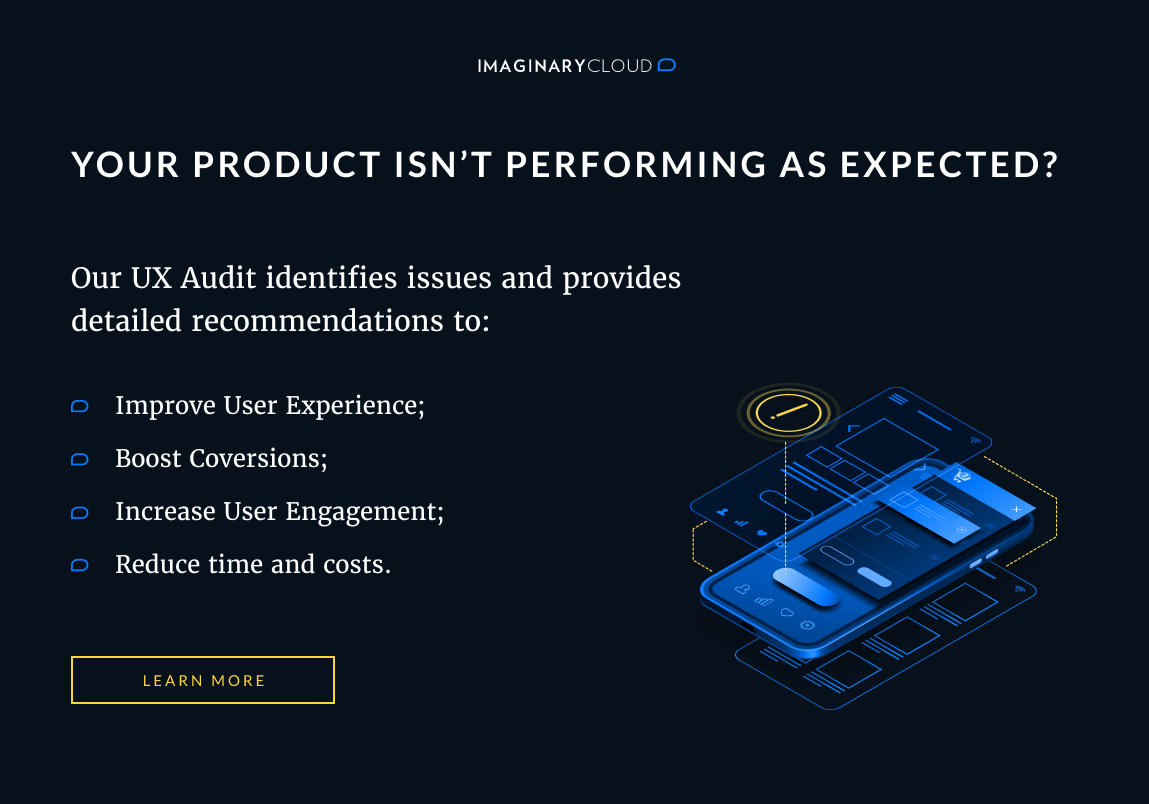A good design brief is a necessary condition for achieving a good design.
I wish I could provide real data to back up this statement, but this is, by nature, a subject that's very difficult to quantify. Nevertheless, I will try to explain why and how a good design brief is highly correlated with good design outcomes.
What often happens
On many occasions I have received briefs that were, in fact, not briefs, in the sense that they contained the questions and the answers.
Let me explain.
For most people that are asking for design, their belief is that a good design brief is a thorough document that contains very specific instructions.
To avoid risks and bad surprises on their project, these people spend a lot of time working, trying to find the first possible solution to their business goals, before even meeting their design team.
Let's take some examples:
-
The rate of conversion is too low on my page.
I need you to design a modal window asking for registration after 1 min. And it should be red. And blue. And blinking. Oh, and can you add sound?
(OK, I’m exaggerating, but you get the direction). -
We want to build a software to help people find their way in the museum.
It should use beacons, and be for iOS only, and it should be colourful. Here are the wireframes, here is the benchmark of the competition. It should take you 2 days to design, right?
Triggering creativity
One of the pillars of creativity is problem-solving. And one thing that designers love, their raison d’être, is to be recognized as creative problem solvers (and geniuses).
It’s their role to get excited about an idea and become creative, but what makes that happen is when a client brief comes in the right form.
From the perspective of the client, business, marketing and commercial goals are crucial. Hence, these goals should be clearly stated in the brief.
But, most importantly, the problem should be clearly stated, with no answer attached. A clear and simple definition of the problem is what will trigger the best answers. Proposed solutions will not.
Don’t get me wrong: constraints are important, but there is often a confusion between what's a proposed solution and a constraint.
Let's bring in another example.
Proposed solution
The app should be blue because it represents calm and we want the user to feel reassured.
Constraint
The brand colour is blue. Our board members like blue. Use blue.
Working with constraints is also a creativity trigger, and it’s common. But working around a proposed solution will always be painful, for both parties.
"Rather, a well-constructed brief will allow for serendipity, unpredictability, and the capricious whims of fate, for that is the creative realm from which breakthrough ideas emerge. If you already know what you are after, there is usually not much point in looking."
Tim Brown, Change by Design
Getting and staying inspired
Now comes the hard but most interesting part.
Most of the product owners we work with at Imaginary Cloud tend to be experts in their industry. They know their market, they know their users, they know their competitors.
The sum of their knowledge is not something a designer can assimilate in a couple weeks (but it’s worth trying!). In addition to all this industry knowledge, the product owners have the initial inspiration for the product they envision.
They started dreaming about it long before we meet them, and it’s the sharing of this dream which is the central and most important part of the brief. It’s the part that's also the hardest to share on paper.
It’s more often a dialogue than a written statement, and the reason is that part of it can sound irrational, audacious and most often feels bigger than the idea itself.
In the movie Briefly, you can watch some of the greatest designers of our time talking about how they see the design brief, above all the facets of the assignment, as “elusive and romantic”, as a “limitation and a invitation”, something that should be “audacious and impossible”.
In a nutshell, the inspirational part of the design brief is what matters most. It’s often ignored or is not given enough consideration, by both parties, client and designer.
This is why I believe designers should always look for inspiration in the brief, or amend the brief to add and validate this inspiration to it.
"The main thing is to be moved, to love, to hope, to tremble, to live."
Auguste Rodin
Say no and ask for better
The main difference between a junior and a senior designer is the capacity to get the best brief possible out of the relationship established with the client.
When a brief arrives with too few elements to grow on, too little of a vision to leverage empathy and own inspiration, the designer needs to stop and say: “I need a better brief”.
Investing time on research, understanding the subject and the field are necessary. Studying the users is finally becoming the widely adopted good practice. But getting really inspired by a brief is still something that can be easily overlooked.
Incidentally, I've noticed how this inspiration is important for developers as well.
Summing-up
The brief is the launchpad where the journey begins. But it’s also the image that's formed in the mind of all the projects' stakeholders.
It’s initiated by the client or product owner, but when the designer starts the mission, it becomes a duty to keep it up-to-date with all the new findings of the research and exploration of the ideation work, and to transmit it correctly to the implementation team.
In any case, a good design brief is essential in some many aspects to what will be the work of the design team onwards and should not be overlooked.


